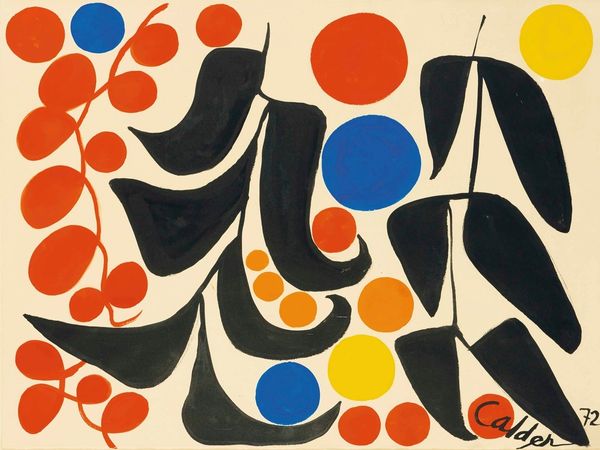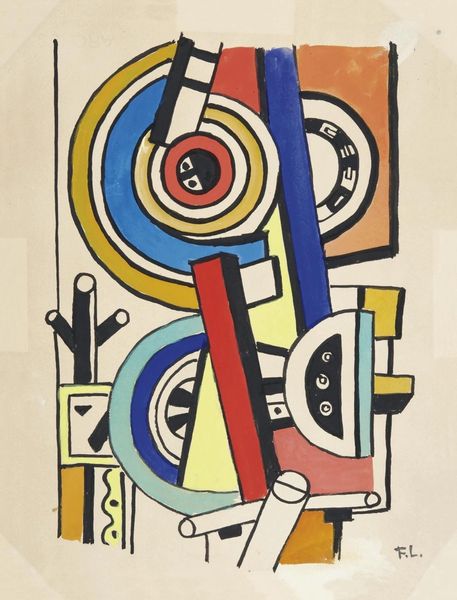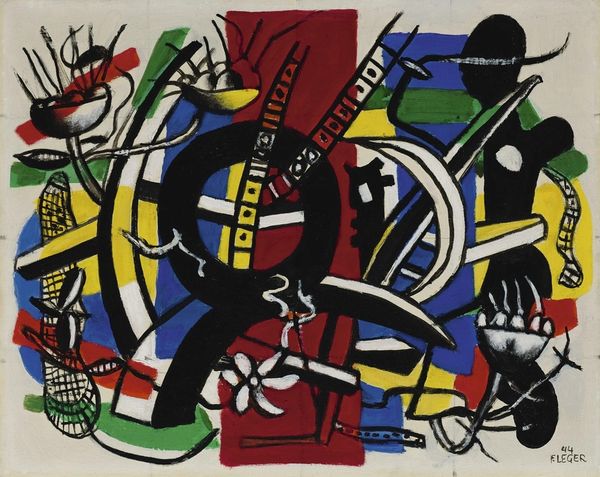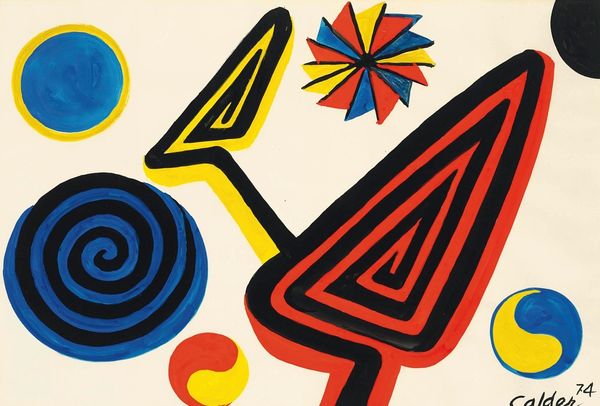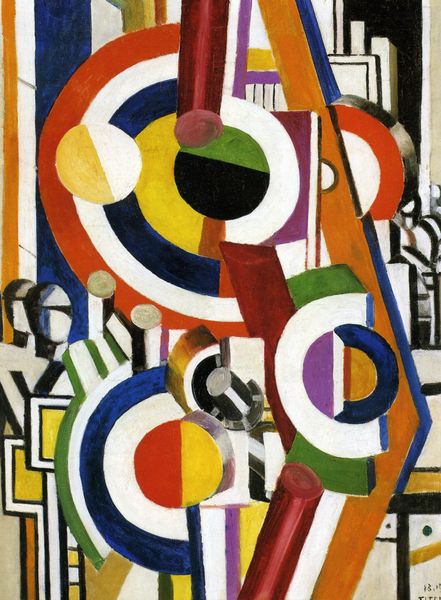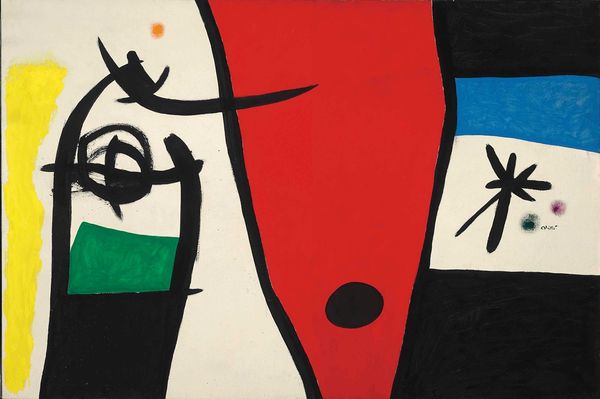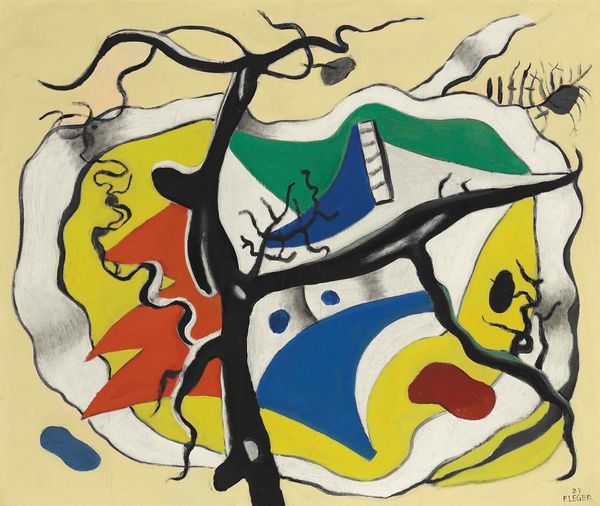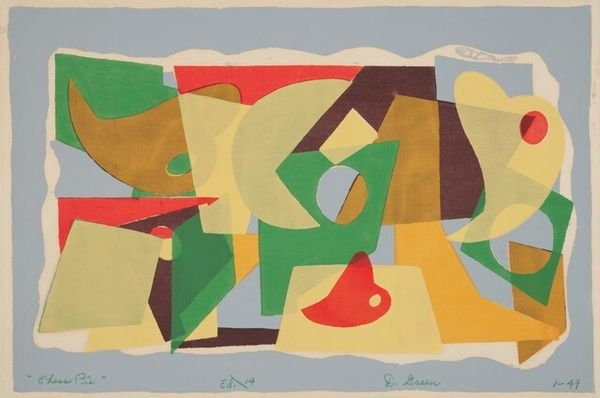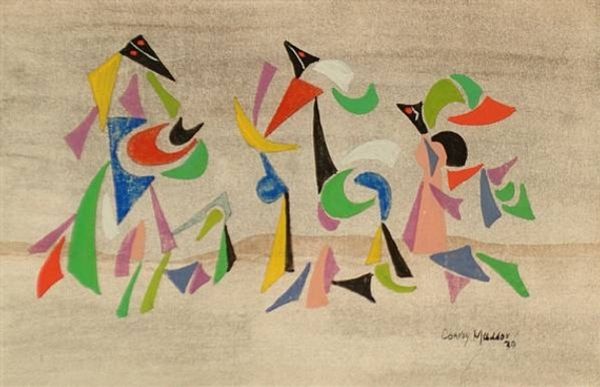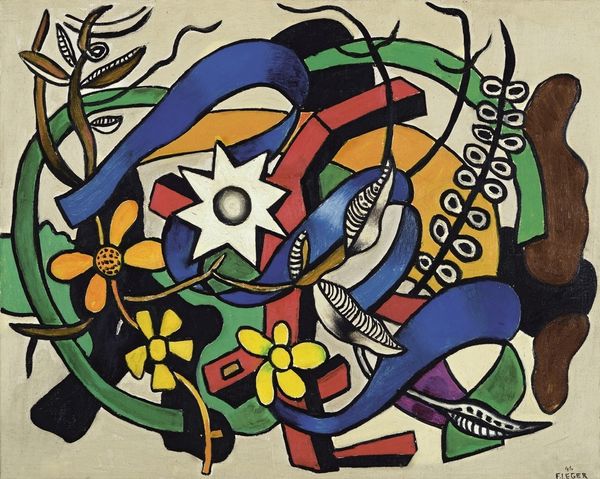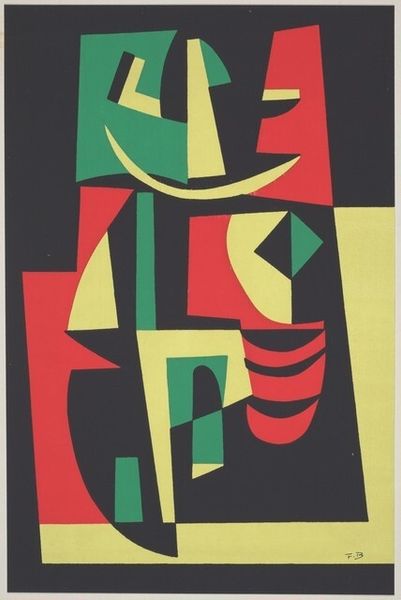
Copyright: Public Domain: Artvee
Editor: So, this is Wassily Kandinsky’s *Réciproque* from 1935, it's an acrylic on canvas. I’m immediately drawn to its playful energy. All those shapes and bright colours just seem to dance across the surface. What do you see when you look at it? Art Historian: It’s fascinating how Kandinsky orchestrates this visual symphony. Notice the recurrence of geometric shapes; the circles, the squares, triangles, and stripes and free flowing lines... they aren't arbitrary. How do these symbols resonate with you? Editor: I guess I never really thought about it that way… geometric shapes are universal, aren't they? So, did he use them to tap into a deeper cultural understanding? Art Historian: Precisely! Consider the period. This was painted as Europe was in turmoil before World War II. The geometric forms and bold colors are quite a departure from his earlier more expressive work. The work has shifted, why do you think the change in visual symbolism emerged? Editor: I never considered how the approaching war may have played a role in the piece... It feels less emotional somehow, but maybe more universally understandable? It uses symbols but they aren't so closed off from general audiences.. It also is titled "reciprocal"... like the communication is mutual... Art Historian: An excellent point! It can be understood as the interplay of destruction and rebuilding. The tension between chaos and order, captured within the bright yet carefully placed shapes, could reveal the human capacity for both. Editor: That's… wow, that gives me a lot to consider about the symbols we see in art and how those choices mirror the anxieties or hopes of a culture during different periods. Art Historian: Absolutely. Every line, every color holds a story, if you're willing to listen to its echoes!
Comments
No comments
Be the first to comment and join the conversation on the ultimate creative platform.

